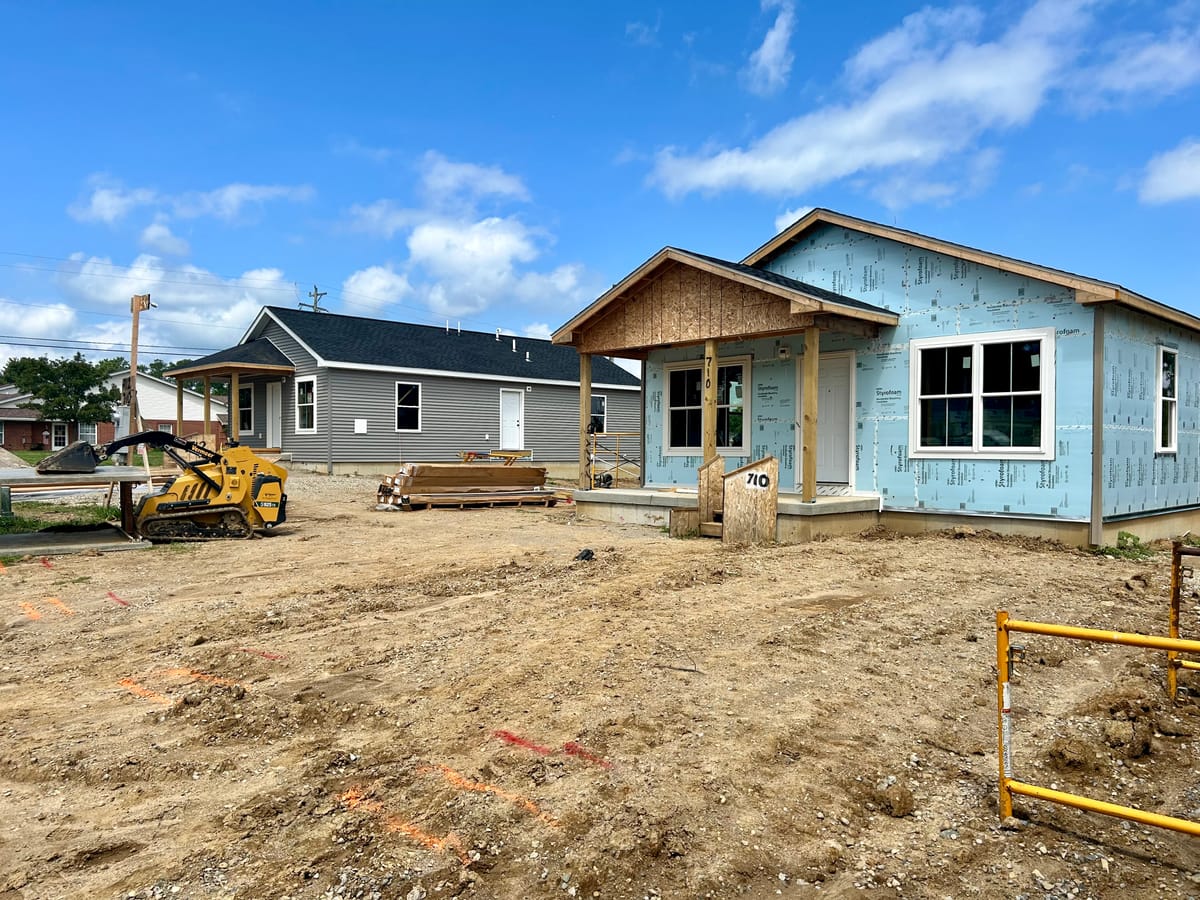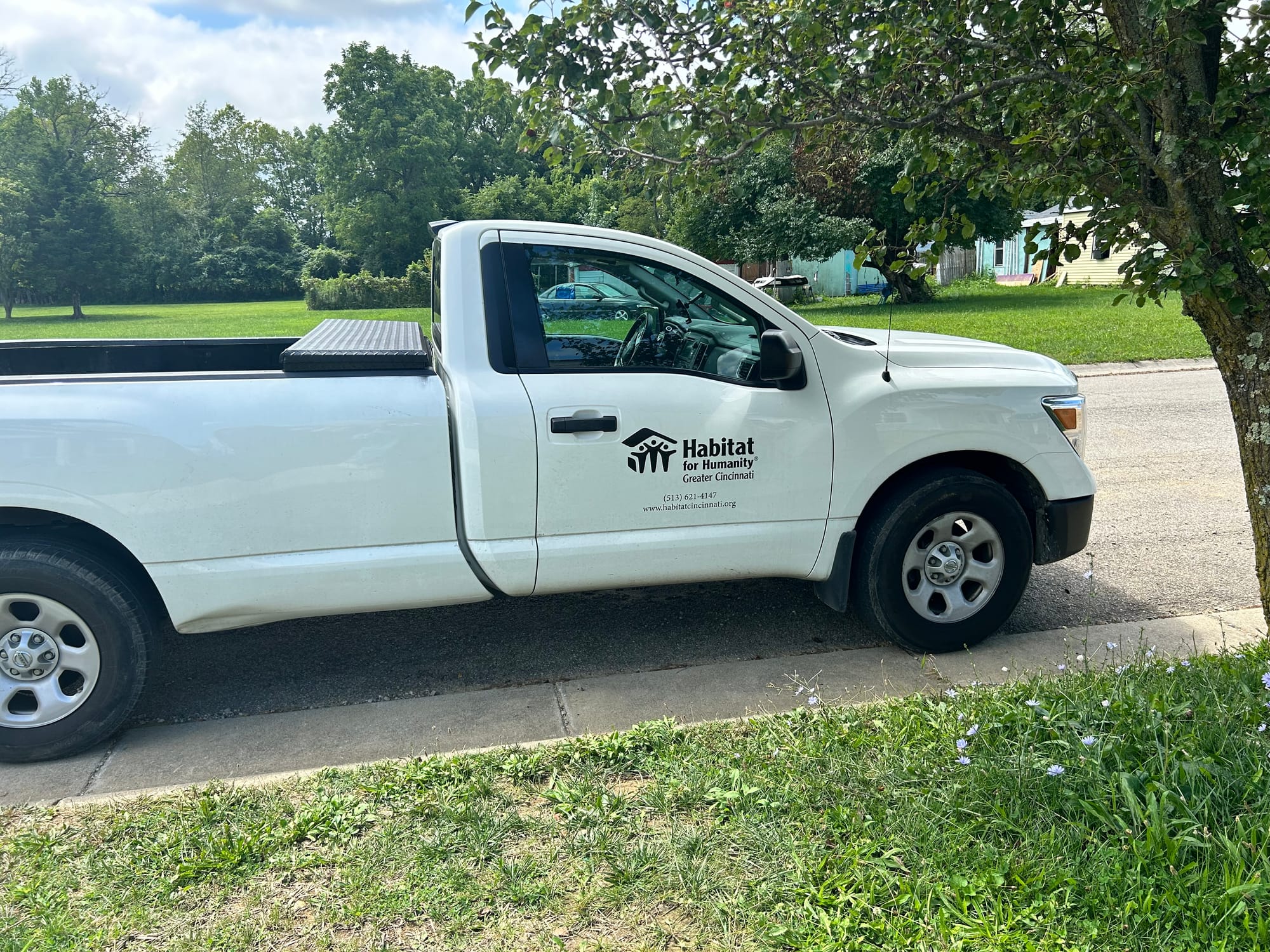More affordable housing on the way as current Habitat plan nears completion
The final two houses in Oxford's 20-home Habitat for Humanity development are set to finish construction this year. Two new affordable housing developments are in the works to meet additional housing needs.

Ian Bailey, 47, has experienced drug deals in his front yard, gunshots outside of his window and people smoking near his kids' playground.
After years of dealing with the danger of simply walking outside, Bailey said they needed a change. He boxed his family of five up and moved from Cincinnati's Over-the-Rhine to Oxford.
"I was concerned about their safety," Bailey said, "and I had to get somewhere with my family that was safe. And then when we came out here, this is the first time I actually could let my kids go outside and not be really concerned."
Bailey and his family escaped their situation through the assistance of Habitat for Humanity, a nonprofit organization aimed at creating "a world where everyone has a decent place to live."
While Oxford's first Habitat development, Reckford Woods, is nearing completion after 14 years, the community has two more affordable housing projects in the works, including a new Habitat development on Chestnut Street.
How Habitat helps residents like Bailey
In 2010, the Greater Cincinnati chapter of Habitat for Humanity partnered with the City of Oxford in 2010 to build 20 houses in two cul de sacs off of Hester Road known as Reckford Woods. Joe Hansbauer, president and CEO for Habitat for Humanity of Greater Cincinnati, said new homeowners are required to do 60 hours of education about finances and home ownership in addition to 200 hours of sweat equity, or volunteer hours helping to build their home.
After Bailey completed his sweat equity hours by installing windows, walls and more, they moved into their home May 22, 2024.

Roxanna Trahan, a fellow Reckford Woods resident and a social worker for Lighthouse Youth and Family Services, said that the process is selective, but Habitat for Humanity encourages people to continuously reapply.
"Sometimes people think like, it's just giving a home away, and it's not," Trahan said. "You have to qualify and be eligible for the loan."
The affordability of the houses, plus Habitat's 0% interest mortgages, are a major plus, Trahan said. Homeowners have to put in work to earn the housing, though, she said.
"It's a very wonderful opportunity, but you would have to make sure that you're willing to partner with them," Trahan said. "So like building in 90-degree weather and not really knowing what you're doing and you have to be teachable and patient but it's a good source of pride, knowing that certain installations or pieces that I've done with the house like I did them."
Hansbauer said the homeowners go to the closing table with only the first year's property insurance as a payment, and otherwise they have the sweat equity as their down payment.

The homes in Reckford Woods sell for $180,000, Hansbauer said, and the total cost of construction for the 20 houses has been roughly $1.47 million. The final two homes, which are under construction now, should be done by November, Hansbauer said.
Cottage Community Developments
The Habitat community may be nearing completion, but a different development off Hester Wood is still early in the planning phase.
Oxford and Community Development Professionals (CDP), a nonprofit organization in Hamilton, are working together to build a cottage community on 5234 Hester Road structured around affordable rent.
The 12-unit project will feature 396-square-foot cottages, each with one bedroom, a kitchen, a living room, a front porch, a washer and a dryer.
CDP President and CEO Mindy Muller said the city has leased the land to the Center for Community Revitalization (CCR), a nonprofit that will manage the cottages for the next 20 years and pay $1 per year to the city.
Muller said the city donated $500,000 in American Rescue Plan Act (ARPA) funds for the purchase of the property, Federal Home Loan Bank granted $400,000 for development, the Oxford Community Foundation donated $15,000 toward furnishing the units and First Financial donated $7,500, along with an additional $100,000 in private funds. She said the end cost will be roughly $2 million.
"Our goal is creating new and innovative housing options that are affordable," Muller said. "The cottage community provides a new way of housing people and we hope it will serve as a model for other cottage communities to be developed."
Unlike Habitat for Humanity, the Community Development Professionals won't use volunteers unless it's for ancillary parts of the project like a public garden or a partnership with HUGS and more.
Assistant City Manager Jessica Greene said the target income level is 60% of the area median income. She said a planned development has been approved and now they're working on getting a building permit.
She said the next council meeting Aug. 20 will hopefully include all of the cottage community paperwork for the legislation, but they're doing one development at a time.
Habitat for Humanity Developments: Chestnut Street
Meanwhile, the Habitat houses on Chestnut Street will be geared toward attainable home ownership.
Green said the development will include between 33 and 38 townhomes for first time homebuyers to purchase. The homeowners, similar to the Reckford Woods houses, will need steady employment, a good credit debt ratio and have taken financial literacy courses along with their sweat equity hours.
Hansbauer said these will be built in row house style, so there'll be five to nine units connected to each other, but still single family homes.
Greene added that unlike the cottage's 60% median income, this will be at 80%.
"I consider habitat to be workforce housing for entry level employees," Greene said, "and the cottage Community Housing is people who maybe need a little bit more assistance to have housing."

At a City Council meeting Aug. 6, the council members agreed to use $500,000 in ARPA funds to support infrastructure for the project. The council members also accepted $990,000 in grant funding from the Ohio Department of Development's Welcome Home Ohio fund, which applies $30,000 per unit for a total of 33 units.
The caveat with the Welcome Home Ohio funding is that since it's intention is to jumpstart projects, they're targeted to be completed by May 2026.
Hansbauer said as the funding is structured today, the homes that are completed and sold prior to May 2026 will be able to receive subsidy per unit. The unfinished units would forfeit their funding back to the state to be made available again via an application process.
The houses will be completed in a three year cycle where each year two to three of the larger structures including five to nine single family housing units will be built.
Hansbauer said the estimated final cost for the Chestnut houses will be more than $8 million.
Greene said avoiding a stigma around affordable housing goes back to high quality property management.
"People don't even know where [other affordable rentals] are because they're well managed and that is our goal," Greene said. "And that's what we're trying to build into our development agreement with this project."
"We are not a homeless to homes program," Hansbauer said. "... [we want] to encourage folks to apply for the program, we do expect there to be a large demand for quality home that is still affordable to those below 80% of the area median income. But we want to make sure that everyone that might qualify is aware of this development and knows how to express their interest and to apply."




